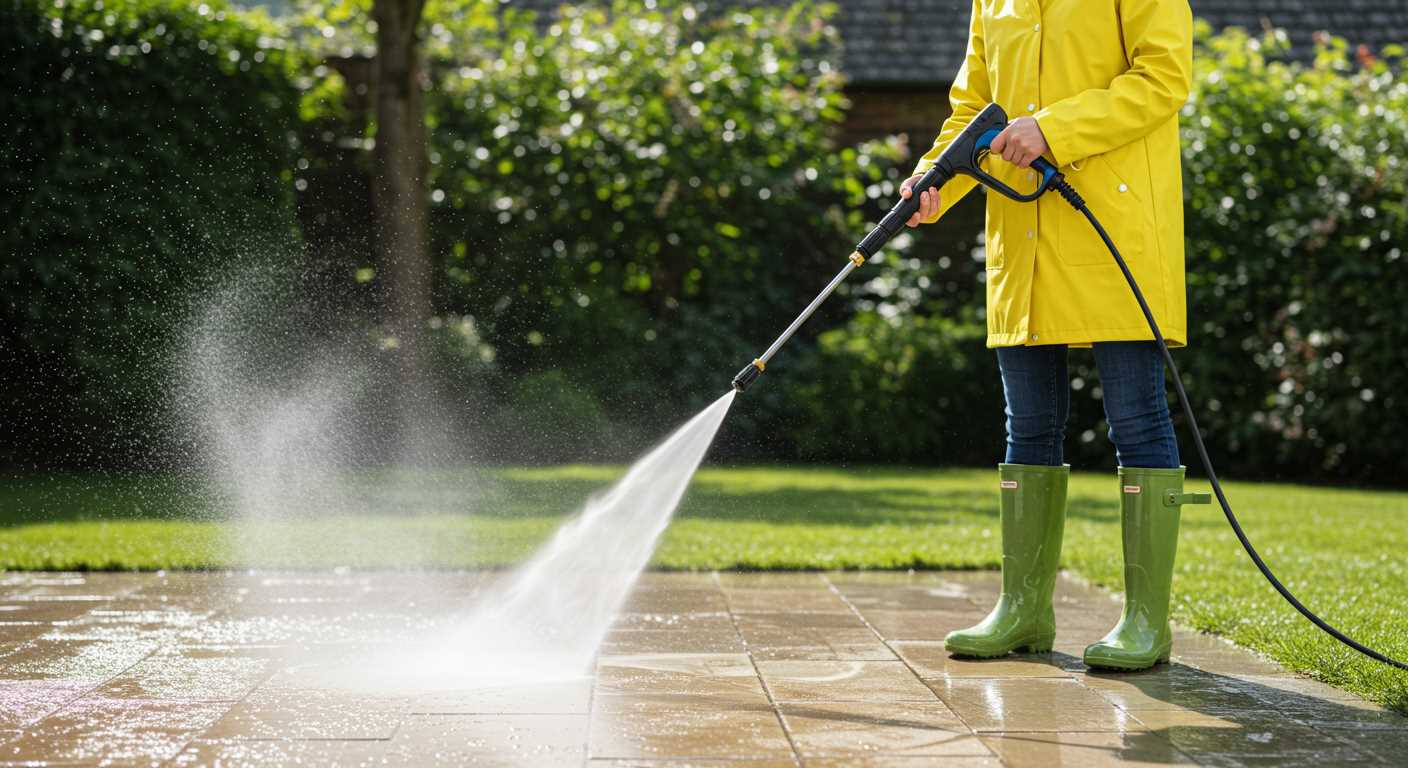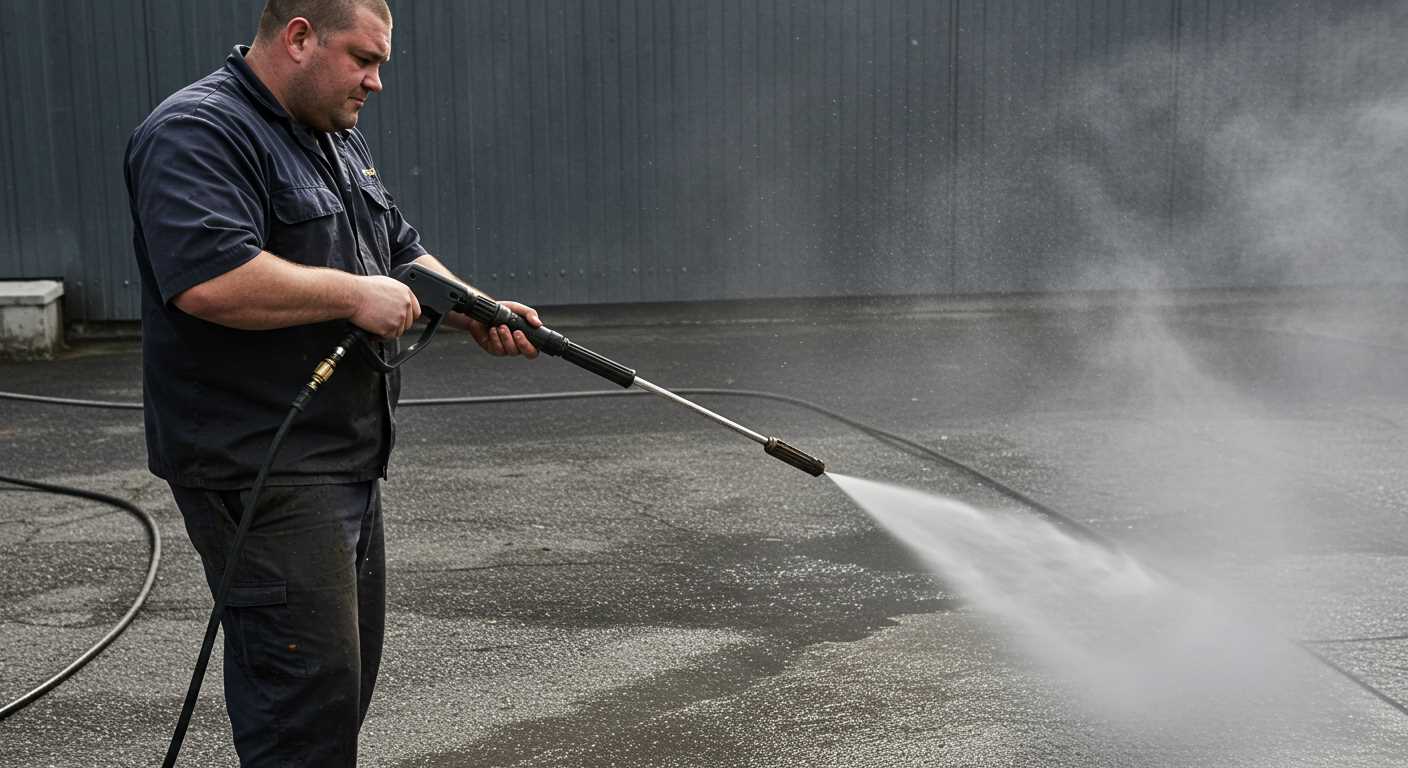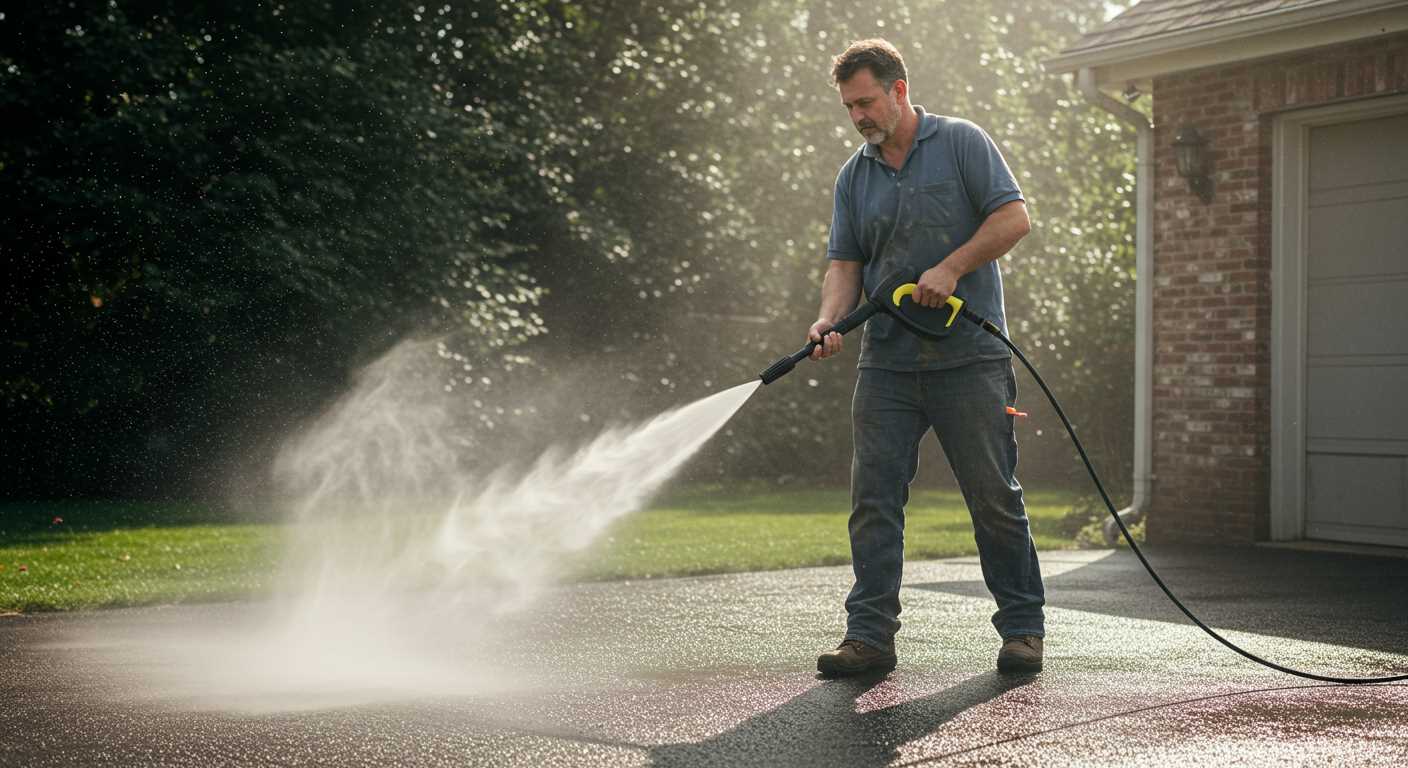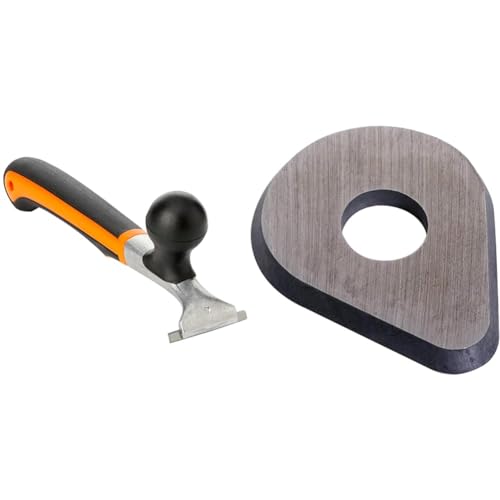

For anyone considering the use of high-pressure cleaning equipment on hard surfaces, it is critical to understand the potential for adverse effects. While the intention is often to refresh and clean, various factors can lead to surface degradation. My extensive experience in the cleaning equipment industry has revealed that using overly powerful devices or techniques without proper knowledge might harm the integrity of hard surfaces.
The force exerted by these cleaning machines can strip away the outer layers of various surfaces, especially if the nozzle is too close or the flow is directed at a high angle. I recommend maintaining a safe distance from hard surfaces and adjusting the pressure setting according to the material being treated. It is advisable to test on a small, inconspicuous area first to gauge how the surface reacts.
Moreover, it’s essential to factor in the condition of the surfaces before proceeding. Existing cracks or wear can exacerbate the risk of further damage. If you spot such issues, it may be wise to consider alternative cleaning methods or consult an expert for tailored advice. This approach not only ensures effective cleaning but also prolongs the life and aesthetic appeal of your surfaces.
Can Pressure Washers Harm Concrete Surfaces?
To protect your hard surfaces, maintain the appropriate pressure settings. Using over 3,000 PSI is risky and can lead to problems long-term. Stick to a lower pressure range of 1,500 to 2,500 PSI for most applications on solid surfaces to prevent erosion or chipping.
Avoid using narrow nozzles, which can concentrate force and increase the chance of harm. A fan or wide spray is more effective for thorough cleaning without jeopardising your surface integrity.
In addition, keep the lance at an optimal distance of around 12 to 18 inches from the surface. This technique helps avoid any direct impact that could lead to pitting or surface wear.
Regular maintenance of your equipment is essential. A well-calibrated machine ensures consistent and gentle performance, reducing risks related to uneven cleaning and unexpected wear.
In spaces with existing cracks or damage, be cautious. A strong jet of water may exacerbate these issues, compromising the structure further. Consider sealing cracks prior to any cleaning procedure.
Limit the frequency of intense cleaning sessions. Routine maintenance with diluted soap solutions and soft scrubbing can help keep surfaces clean while minimising the need for high-pressure applications.
Understanding Concrete Composition and Durability
.jpg)
The composition and strength attributes significantly influence the ability of surfaces to withstand cleaning methods. Concrete primarily comprises cement, aggregates (like sand and gravel), and water, each contributing uniquely to its overall resilience.
Cement and Aggregate Ratios
The ratio of cement to aggregates is crucial. A higher cement content enhances compressive strength, while a balanced mix promotes durability against various environmental factors. Standard mixes often use a 1:2:3 ratio of cement, sand, and gravel, although variations exist based on intended use.
Water-Cement Ratio
The water-cement ratio directly affects the final product’s strength and porosity. A lower ratio typically results in a denser, stronger surface but may also increase brittleness. Ideal ratios usually lie between 0.4 and 0.6 for optimal strength and workability.
- Lower ratios (<0.4) lead to increased strength but may cause cracking.
- Higher ratios (>0.6) enhance workability but reduce durability.
Hydration plays a key role in achieving maximum durability. Adequate curing time allows the concrete to reach its full potential, making surfaces less susceptible to wear and deterioration.
In terms of surface treatments, sealants can further protect against moisture ingress, stains, and freeze-thaw cycles, extending the lifespan of the material significantly.
Regular inspection reveals any early signs of degradation, allowing for timely repairs and preventative measures, ensuring longevity. Any enhanced understanding of these elements can mitigate the risks when using high-pressure cleaning techniques.
Identifying Proper Pressure Settings for Concrete

For optimal maintenance, set your device between 3000 to 4000 psi for robust surfaces like pavement. This range sufficiently removes entrenched grime and stains without risking structural integrity.
Always assess the situation; if the surface is particularly delicate or has existing damage, consider lowering the pressure to around 2000 psi. Conduct a test on a discreet area to evaluate the effect before proceeding further.
Adjust the nozzle appropriately; a 15-degree or 25-degree tip works efficiently for most scenarios. The narrower the angle, the more concentrated the jet, which can enhance cleaning performance but also increase the risk of etching.
Maintain a safe distance of at least 12 inches from the surface when spraying. This distance helps to control the impact force and diminishes the chances of wearing down material excessively.
Lastly, keep the spray moving; a steady, sweeping motion prevents focused pressure on a single point, reducing the risk of creating grooves or pitting patterns that could compromise stability.
Common Risks of Overusing a Pressure Cleaner on Concrete
Utilisation of high-powered equipment on hard surfaces without understanding the implications can lead to significant issues. Frequent and intense usage can result in surface erosion, gradually eliminating the fine top layer and exposing aggregate beneath. This not only alters the appearance but may also lead to increased vulnerability to stains and moisture intrusion.
Another risk is the creation of micro-cracks. Consistently applying forceful blasts can settle into even the smallest imperfections, exacerbating them over time. These micro-cracks can grow, leading to more pronounced chipping or spalling, ultimately compromising the integrity of structures.
Excessive cleaning can also remove sealers and protective coatings. Many surfaces are treated for longevity and aesthetics, and frequent high-pressure cleaning can strip these away, leaving the underlying material exposed to environmental factors.
Additionally, improper angle and technique can contribute to uneven wear. Keeping the nozzle too close or at an inappropriate angle may lead to streaking or patchy cleaning results, necessitating further cleaning efforts and causing unnecessary wear on specific areas.
It’s prudent to alternate methods, using softer cleaning solutions for regular maintenance. This approach not only preserves the surface but also saves time and resources, ultimately extending the lifespan of the material.
Best Practices for Maintaining Concrete Surfaces
Regular sealing of surfaces with appropriate sealers enhances protection against moisture and stains. Aim for a sealant that matches the finish of your area–whether matte or glossy. Reapply every few years or as needed based on wear.
Utilise a gentle scrubbing method with pH-neutral cleaners for routine upkeep. This approach avoids harsh chemicals that may lead to surface degradation. For tougher stains, consider a diluted vinegar solution or a specialised cleaner for specific types of blemishes.
Conduct routine inspections to identify cracks or chips promptly. Address these issues swiftly with commercial-grade repair products to prevent further deterioration. Small repairs often act as a proactive measure against more extensive damage.
Clear debris, leaves, and standing water regularly. Clogged drains can lead to water pooling, which might compromise structural integrity. Consistent removal of organic matter reduces the likelihood of algae or moss growth.
Implement a snow and ice management strategy in colder climates. Use a plastic shovel for snow removal and avoid metal tools that can scratch the surface. Additionally, choose de-icing agents that are safe for use on hard surfaces to minimise potential harm.
For exterior applications, ensure proper drainage away from surfaces to prevent long-term wear from moisture. Installing gutters or adjustments to landscaping can significantly extend longevity.
How Temperature Affects Pressure Washing Concrete

Temperature plays a significant role in the effectiveness and safety of washing surfaces. When working with high-pressure equipment, consider the following factors related to temperature:
- Cold Weather: Operating in low temperatures can affect cleaning results. Water can freeze, leading to inefficient cleaning and potential blockages in hoses. It’s advisable to use warm water settings where possible.
- Heat Levels: Extremely high temperatures increase the risk of damaging surfaces. Heat can cause thermal shock, leading to cracking or flaking. Opt for moderate temperatures to ensure thorough cleaning without risks.
- Sunlight Exposure: Direct sunlight can dry out cleaning solutions rapidly, diminishing their effectiveness. It’s best to work in shaded areas or during cooler parts of the day.
- Surface Temperature: Before starting, check the temperature of the surface. Overheated surfaces retain heat and may react differently. Cooler surfaces are less susceptible to damages from high-intensity cleaning.
Monitoring these factors enables successful cleaning outcomes with reduced risk of adversely impacting surface integrity. Adjusting equipment settings according to temperature will provide optimal results while maintaining the longevity of your surfaces.
Signs of Damage After Pressure Washing Concrete
Look for the following indicators of potential harm on your surface after using a high-powered cleaner:
- Chalking: Observe for a white, chalky film that may indicate surface degradation.
- Pop-outs: Check for small pieces of the surface breaking away, often resulting from the force disrupting the aggregate.
- Cracking: Inspect for new or widened fissures that appear post-cleaning, signalling compromised integrity.
- Spalling: Look for flaking or peeling of the surface, particularly in areas subjected to excessive pressure.
- Discolouration: Notice any unusual changes in colour that might suggest erosion or chemical reactions prompted by the cleaning process.
A careful examination after maintenance can help catch these issues early. If any of these signs are present, it may be time to reconsider your cleaning technique or seek professional advice.
| Sign | Description | Potential Cause |
|---|---|---|
| Chalking | A visible white film on the surface. | Surface deterioration from excessive force. |
| Pop-outs | Small fragments breaking away from the surface. | Pressure disrupting the concrete aggregate. |
| Cracking | New or expanded cracks in the material. | Loss of structural integrity due to force. |
| Spalling | Flaking or peeling of the surface layer. | Overuse of high pressure damaging the surface. |
| Discolouration | Unusual colour changes on the surface. | Erosion or chemical reactions from cleaning agents. |
Assessing these signs can prevent further deterioration and ensure longevity. Regular maintenance, alongside judicious cleaning methods, will preserve the integrity of your surfaces.
Alternative Cleaning Methods for Concrete Surfaces

For maintaining and restoring outdoor pathways and drives, I often recommend several effective techniques aside from high-pressure cleaning. One standout option is using a mixture of warm water and mild detergent. Apply it with a stiff-bristle broom to lift grime and stains effectively. This method is gentle yet powerful enough for routine cleaning.
Another practical choice is employing a surface cleaner attachment, which can be adapted to standard garden hoses. This tool distributes water evenly, minimising wear on the surface while maximising cleanliness. It is particularly useful for larger areas, providing a thorough clean without high intensity.
Stain Removal Techniques
For tackling stubborn stains, consider utilising a baking soda paste. Combining baking soda with water creates a non-toxic abrasive cleaner, ideal for removing oil stains and rust. Apply the paste, let it sit for a while, then scrub with a brush for outstanding results.
Additionally, applying vinegar is another effective strategy for lifting stains without harsh chemicals. For discolouration, use undiluted vinegar directly on the affected area. It reacts with stains, making them easier to scrub away after a short wait.
Maintenance and Prevention
Regular upkeep is essential. Sealers can protect surfaces from stains and weather effects, extending their lifespan significantly. I suggest reapplying a quality sealant every few years to maintain aesthetics and durability.
Lastly, for routine maintenance, simply sweeping and using a hose regularly can keep outdoor areas looking fresh and clear from debris. This proactive approach can prevent the buildup of dirt, moss, and algae, reducing the need for more intensive cleaning methods.








